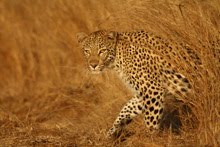Schlick 2000 parking lot in Fulpmes, I took the Gondola up to the middle station. From there, one heads out behind the ski school (to the north) and quickly gets in to the woods. The trail gently makes its way up through the woods and is very well sighnposted; orienteering - even after heavy snows - should be no problem whatsoever. I had thought that the skiers would detract from the walk, but they were far enough away for the trail to be very peaceful and wonderfully enjoyable.
View Larger Map
In the first half of the snowshoe trail, I came across a couple of Common Crossbill flocks, noisily feeding in the Norway Spruces (Picea abies) that dominate the woodland. Their German name - Fichtenkreuzschnabel - refers to their preference for spruce (Fichte) which pretty much sums up where you always tend to find them. The groups I came across were very vocal - I suppose they are probably getting ready to breed now while the spruce have an abundance of seed.
I also came across the occasional treecreeper (Baumläufer), some Coal and Great Tits and Nuthatches in the lower, denser forest. Well, maybe dense is not the best word to describe the forest there. In the lower sections of the trail, the canopy is fairly closed, but the heavy snow meant that the under-story was rather open and made it very easy to explore a bit off trail.

Further up the trail, the forest canopy thinned and eventually the forest petered out. Nearing the top of the trail, one is rewarded with great, big expansive views over the Stubaier and Wipp Valleys and their surrounding peaks. Taking a tea-break, I scanned the cliffs and peaks for Alpine Ibex and Golden Eagles without success. A pair of Spotted Nutcracker surveyed their lands from treetops at the edge of the tree line.

Reaching Schlicker Alm (1645m asl), you can enjoy some traditional Tirolean mountain food (and a beer ;-) before heading back down again. The return could be done back alone the trail you came up, but if you packed a Rutschblattl then getting down the sledding track is much faster and a whole lot of fun. I have no idea what I would call a Rutschblattl in English but it is this little plastic plate that you sit on, and a handle that comes up between your legs. It kinda looks like a miny, flimsy plastic shovel and is mainly a kids toy for sliding down little slopes. Anyhow, they cost almost nothing and weigh even less so are perfect for taking on snowshoe tours. Getting back down slopes (or sledding tracks) with a Rutschblattl is a whole lot easier than walking back down with snowshoes on! I have to say that maintaining complete control of the thing is probably never going to happen for me; your bum tends to take a few knocks; and they were not designed for high-speed toboganning but they are a whole lot of fun.
Happy birding (and snowshoe walking)
Dale






















